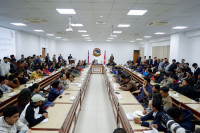National
Evidence of Koliya state found in Banjariya excavation site
A team of archaeologists excavated substantial evidences suggesting that Panditpur of Banjariya VDC was the capital of the ancient state Koliya.
Bechu Gaud
The team made such a claim after finding materials dating back to the seventh century BC.
The archaeologists have found ring wells, topaz, bangles, glasses, stones, and human statues dating back to the Kushand era. Former Deputy Director of the Department of Archaeology Tarananda Mishra claimed that the findings pointed to the fact that Panditpur was the capital of Koliya, also known as ‘Ramgram’ and is spread across 360,000 square kilometres.
According to Mishra, the team excavated the foundations of boundary walls erected to protect the city which suggests that the site was the location of the administrative headquarters in Antonagar. The team has also found glasses belonging to the Mughal era suggesting that even the Mughal Kings might have visited the area. “The Kol trees and Kolin river located in the area provide basis for the existence of the state,” said Mshra.
Koliya is believed to be among the sixteen states of ancient Jambudweep spread across Narayani river in the east, Rohini river of Rupandehi in the west, Pipliban in South India, and Chure hills in the north. “As the region was rife with tigers, the King Ram of Banaras saved a woman from attacks and later tied the knot with her. The King then settled in the area, built a pagoda known as Ramgram Stupa and established the city of Ramgram, which is known as Panditpur,” added Mishra.




 12.12°C Kathmandu
12.12°C Kathmandu















